
For the first time, an expedition was organized in 1926 at the suggestion of the People's Commissariat of Azerbaijan to study the state of animal husbandry in our republic. A research group consisting of 12 people was formed for the implementation of the event. A total of 16,540 head of animals were studied in private farms in 418 settlements. The expedition collected 5,543 milk, 2,340 wool, 71 hides, 526 feed, and 5,690 plant samples. Additionally, 7 animal skeletons, 520 animal head skeletons, and 150 sheep tail skeletons were studied. In the same year, by the decision of the Government of the Republic, the foundation of the livestock science center was laid 7 km from the city of Ganja and 3 km from the city of Khanlar (Goygol). Based on the results of the expedition in 1929-1930, a collection of books in 6 volumes covering all areas of Azerbaijan livestock breeding was published.
From 1944-1949, the station was headed by Professor F. A. Malikov, and he almost prepared the concrete concept of obtaining the status of an independent scientific-research institution for the future institute.
In 1949, the Azerbaijan Scientific Research Animal Husbandry Institute was established on the basis of the Livestock Experiment Station. The institute was named after Academician Firuz Ali oghlu Malikov from 1979 to 2015. The institute was subordinated to the Ministry of Agriculture of the Republic of Azerbaijan by the decree of the President of the Republic of Azerbaijan dated May 18, 1993.
According to decision No. 109 dated April 17, 2015, the Laboratory of Selection and Breeding of Silkworms of the Azerbaijan Scientific Research Institute of Animal Husbandry and the Azerbaijan Scientific Research Institute of Sericulture named after R.A. Huseynov, the Department of Feed Production Technology, and the Experimental Production Honorary Experiment Station of the Ministry of Agriculture of the Republic of Azerbaijan, a Scientific Research Institute of Animal Husbandry, was established.
From 1944-1949, the station was headed by Professor F. A. Malikov, and he almost prepared the concrete concept of obtaining the status of an independent scientific-research institution for the future institute.
In 1949, the Azerbaijan Scientific Research Animal Husbandry Institute was established on the basis of the Livestock Experiment Station. The institute was named after Academician Firuz Ali oghlu Malikov from 1979 to 2015. The institute was subordinated to the Ministry of Agriculture of the Republic of Azerbaijan by the decree of the President of the Republic of Azerbaijan dated May 18, 1993.
According to decision No. 109 dated April 17, 2015, the Laboratory of Selection and Breeding of Silkworms of the Azerbaijan Scientific Research Institute of Animal Husbandry and the Azerbaijan Scientific Research Institute of Sericulture named after R.A. Huseynov, the Department of Feed Production Technology, and the Experimental Production Honorary Experiment Station of the Ministry of Agriculture of the Republic of Azerbaijan, a Scientific Research Institute of Animal Husbandry, was established.
ACHIEVEMENTS OF INSTITUTE
Azerbaijani Mountain Merino
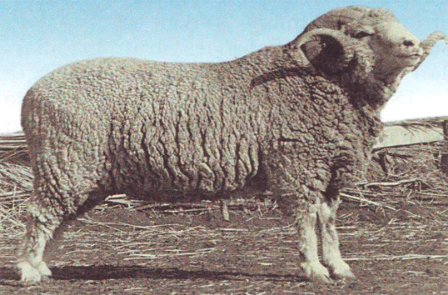
The breed was created between 1935 and 1947 at the Gadabey State Breeding Station under the leadership of F.A. Malikov and M.H. Sadigov. During this period, a complex and creative crossbreeding method was employed. Local Gadabay, Merino, and Bozach sheep were crossed with improved Askania rams. Crossbred herds, adapted to high mountain conditions, were bred. The most valuable feature of the breed is that it is kept in pasture conditions throughout the year. Within the breed, there are mainly two types. Sheep of the first type resemble the improved Soviet Merino. They differ in that their legs and head are covered with wool, their skin is flexible and wrinkle-free, and the lower part of their necks has folds of skin. The live weight of rams of the first type is 75-90 kg, and that of ewes is 40-50 kg. Ewes produce 4-5 kg of very fine Merino wool, while rams produce 8-10 kg.
Absheron sheep breed

It is grown in the plain region of Azerbaijan, including the Absheron Peninsula. This is due to the fact that a lot of fat accumulates in the tail of this breed, and such animals have difficulty moving in the mountains and hills. Often, their tail fat is so large that the sheep cannot carry it, and a roller cart is attached to the tail area of such animals. It provides a good meat yield, with ewes having a live weight of 50-60 kg, and rams 75-80 kg, with a meat yield of 50-60%.
Mil-Karabakh sheep breed
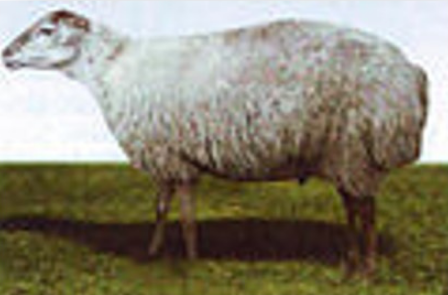
This breed is a local aboriginal breed and has adapted very well to local conditions. Karabakh sheep are less demanding on feed. They have a large body, and their wool color is light gray and brown. Ewes reach 45-50 kg, and rams reach 60-80 kg. The meat yield is 55-60%, and it has a marble structure. They can travel 20-25 km per day. There are many cases of twin births. 130-140 lambs can be obtained from every 100 sheep. Milk yield is also good, with 50-60 kg of milk obtainable from each sheep. The skin is good for leather production. They are less susceptible to diseases.
Azerbaijan brown cattle breed
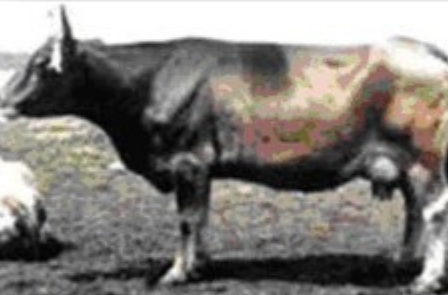
The Azerbaijani brown cattle breed was developed in Azerbaijan, Georgia, and Dagestan, beginning in 1930 through the crossbreeding of local cattle with the Swiss breed. Subsequently, the breed was further enhanced by incorporating the Lebedin and Kostroma breeds. "Selective breeding" was implemented in third-generation hybrids under favorable feed storage conditions. Through diligent breeding efforts, a novel category of brown cattle emerged from creative crossbreeding, officially recognized as the "Caucasian brown" in 1960, with the active participation of S. A. Rasizade, S. A. Gocayev, and others.
The breed exhibits a milk yield ranging from 2,400 to 3,000 kg, with a milk fat content of 3.8-4.0%. The live weight of cows is 400-450 kg, while heifers weigh between 700-750 kg. Exceptional cows can achieve a milk production of 4,000-4,500 kg with a fat content of 4.0-4.2%. The breed's potential capabilities are even greater. Starting in 1950, a hybridization program involving Azerbaijani zebu and highly productive Karamal breeds, along with local breeds, was initiated. The meat yield of Aberdeen-Angus x Zebu hybrids and Hollaway x Gonur Caucasian crosses was thoroughly investigated.
The breed exhibits a milk yield ranging from 2,400 to 3,000 kg, with a milk fat content of 3.8-4.0%. The live weight of cows is 400-450 kg, while heifers weigh between 700-750 kg. Exceptional cows can achieve a milk production of 4,000-4,500 kg with a fat content of 4.0-4.2%. The breed's potential capabilities are even greater. Starting in 1950, a hybridization program involving Azerbaijani zebu and highly productive Karamal breeds, along with local breeds, was initiated. The meat yield of Aberdeen-Angus x Zebu hybrids and Hollaway x Gonur Caucasian crosses was thoroughly investigated.
Azerbaijani buffalo
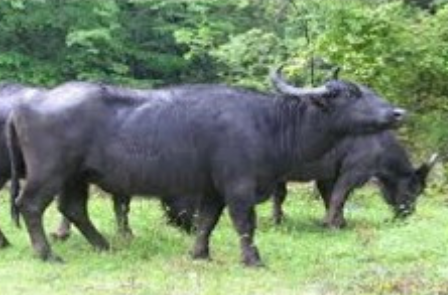
The animal husbandry sector in our republic boasts a diverse array of gene pools. Within these genetic resources, the Azerbaijani buffalo stands out for its superior productivity and environmental resilience, playing a distinctive role in the lives of our people.
Buffalo, distinguished from cattle breeds by several valuable ecological traits, surpasses them significantly in terms of both milk and meat, making it economically more advantageous. Thanks to the high fat content in its milk, the buffalo outperforms all breeds of cattle, including yak, sheep, and zebu, which are known for their fatty milk. The relative resistance of Azerbaijani buffaloes to certain infectious diseases, particularly hemosporidiosis, further underscores that buffalo breeding is the most favorable aspect of animal husbandry in our republic.
Buffalo, distinguished from cattle breeds by several valuable ecological traits, surpasses them significantly in terms of both milk and meat, making it economically more advantageous. Thanks to the high fat content in its milk, the buffalo outperforms all breeds of cattle, including yak, sheep, and zebu, which are known for their fatty milk. The relative resistance of Azerbaijani buffaloes to certain infectious diseases, particularly hemosporidiosis, further underscores that buffalo breeding is the most favorable aspect of animal husbandry in our republic.
Azerbaijani Zebus
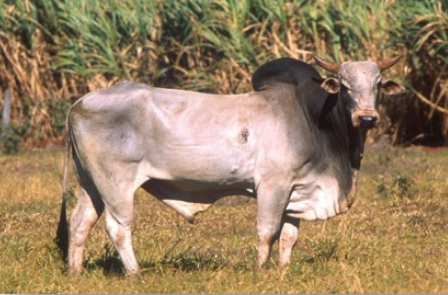
In the Republic of Azerbaijan, zebu and zebu-type cattle have been bred since ancient times. Due to their historical existence in extensive conditions, they tend to be relatively temperamental, small in stature, and produce limited milk. However, under conditions of abundant feed, their annual milk yield can rarely reach 2800-3000 kg.
Therefore, zebus hold significant importance in the development of more productive, novel breeds that are rich in both fat and milk, as well as being resistant to diseases in animal husbandry.
Azerbaijani Zebus are prevalent in the regions of Lankaran, Astara, Masalli, Lerik, and Yardimli in our republic. During lactation, Azerbaijani Zebus yield 780-1100 kg of milk with a fat content ranging from 4.2% to 6.45%. In terms of roughage digestion, zebus occupy an intermediate position between cattle and buffalo.
Therefore, zebus hold significant importance in the development of more productive, novel breeds that are rich in both fat and milk, as well as being resistant to diseases in animal husbandry.
Azerbaijani Zebus are prevalent in the regions of Lankaran, Astara, Masalli, Lerik, and Yardimli in our republic. During lactation, Azerbaijani Zebus yield 780-1100 kg of milk with a fat content ranging from 4.2% to 6.45%. In terms of roughage digestion, zebus occupy an intermediate position between cattle and buffalo.
 EN
EN

